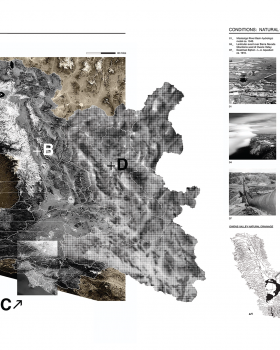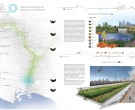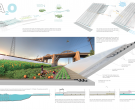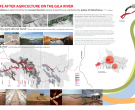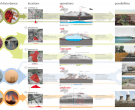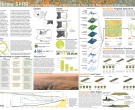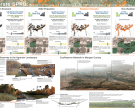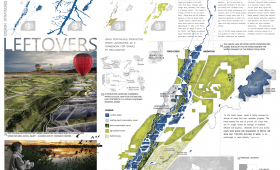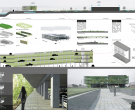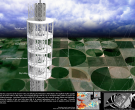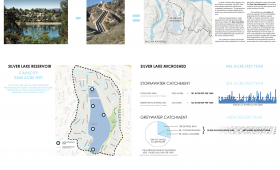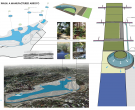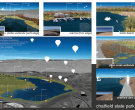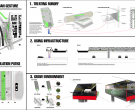The days of single-purpose infrastructures are over. Twentieth-century hard-path system design relied on stationarity—the notion that natural systems fluctuate within an unchanging envelope that can be described, modeled, and predicted, and therefore ‘reliable’ supply can be assured. Stationarity depends on presumed access to political will, capital, cheap energy, and Holocene-era hydrology. Its result is a 500,000-square-mile network of single-purpose pipes, lined with concrete, moving water in a single direction at a static temperature, designed to flatten topography, culture, biological diversity, and time.
A changing hydrological regime in the western United States renders stationarity obsolete. Variability—the result of a reallocated hydrologic cycle brought on by climate change—requires new ways of thinking. Fixed, centralized, overscaled, and energy-intensive infrastructures; impermeable urbanisms; artificially-supported architectures; the hydrologic models upon which they were based, and the policies that uphold them are obsolete.
These proposals suggest an opportunistic overlay of new functions atop existing single-purpose infrastructures, retrofitting them to take on soft, living, adaptive, and passive functions. Highways, for example, not only support traffic but also soak, treat, and store runoff. A dessicated lakebed, drained by an aqueduct, is re-planted with a field of ‘transpiration and energy collection rods.’ Asphalt parking lots are plowed and seeded with urban agriculture. A reservoir designed to store water imports is converted to stormwater treatment wetland and aquifer recharge basin. Ribbons of photovoltaic panels generating 6.53 Gigawatts of solar power roof an aqueduct, taking advantage of desert sun while minimizing water losses due to evaporation. Flood control channels retrofitted to flow in reverse desalinate seawater surging upstream in a passive solar desalination process. Flood-prone laser-leveled fields are perforated, while capturing power-generating steam from thermal wells. Habitat preserves are designed to produce food; agriculture designed to produce habitat. A healthy Anthropocene will see a de-industrialization of water systems, an insurgence of adaptive alternatives, and a design reckoning with the new paradigm of variability.


